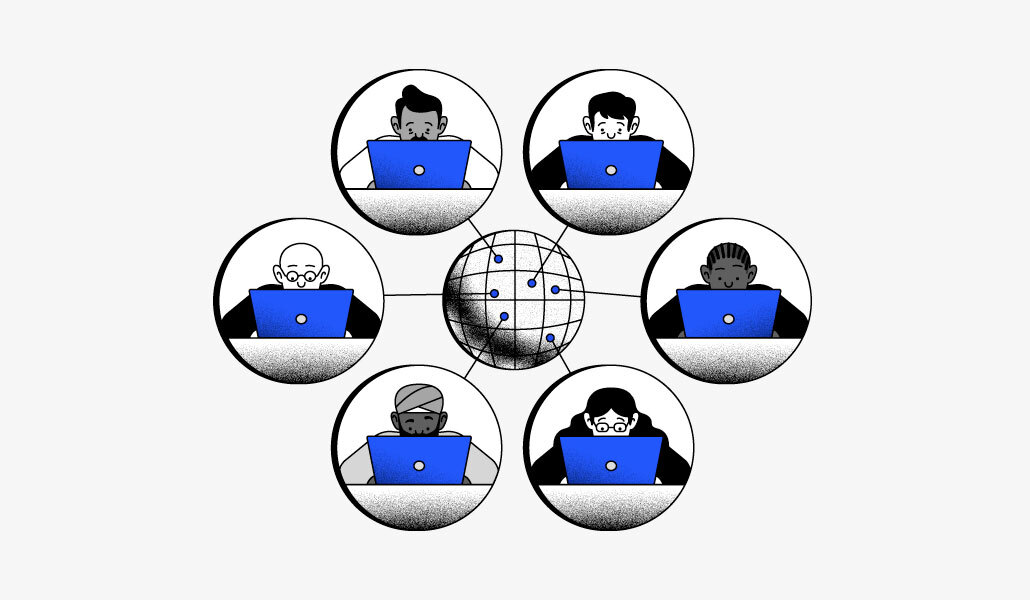Why companies need to foster design, visual communication to succeed in hybrid working

Now that hybrid-working is here to stay, the ways an employee presents themselves and their company on screen, matters more.
Strong presentation and graphic design skills have typically gone hand in hand with certain commercial or creative design roles that require them. Now, they’re being regarded as skills that every employee should sharpen, in order to excel in a hybrid or remote working setup.
That’s why some businesses are calling for design literacy to be baked in at the onboarding stage.
“How do you speak to others through graphic design, or design in general, at a time when we’re more remote than ever?” said Steven Heller, author of “Design Literacy: Understanding Graphic Design.”
Heller compares graphic design to going into a showroom and picking out furniture or going to a clothing store and picking out what you want. “You start thinking ‘how am I presenting myself,’” said Heller. “It’s easy to call it branding now, only because the term is used so prevalently, but it’s really just creating style for yourself and that’s been done for ages … You make it your own.”
At Canva, a visual communications platform for designers and non-designers alike, all new hires, of which there were 700 this year alone, go through a design school, regardless of position, where they’re taught frameworks for creating slides with a narrative vs. information mindset. They’re also sent weekly design tips from the creative team. The design school also goes over how to prepare fonts, how to choose colors and more. It concludes with the new hire presenting to their team.
“Design literacy is becoming more important as the world has become more visual,” said Canva’s chief marketing officer Zach Kitschke. “We’ve seen this massive transformation in the past few years and the way we all communicate and live our lives looks completely different. The hybrid world has become one where visual forms of communication, whether it’s presentations or video content or graphics – different ways of communicating a message — have become vital.”
Kitschke suggests that with today’s visual economy, companies should offer design literacy training. He found that while most companies expect workers to be a content creator from day one by creating engaging slides and presentations, graphics and infographics, even despite the employer not providing proper training on how to do so.
And Kitschke doesn’t think it should stop after the first week. There are ongoing initiatives that can be employed, like Canva’s weekly email tips, or scheduled monthly office hours with design pros.
Naturally, it’s a more straightforward move for a design company to embed design literacy training with all new hires — even if they don’t have a design-based role. But other broader businesses have taken the same tack.
Management consulting company McKinsey & Company has been pushing for design to not be siloed into one department. In fact, Melissa Dalrymple, who leads design teams that integrate with overarching client strategy, argues that design and design thinking is suited to complement traditional strategy. The company describes design thinking as a “cross-functional talent,” and recommends making user-centric design everyone’s responsibility rather than one department’s function.
McKinsey & Company’s research has shown that companies that bring design thinking and design leaders into strategic planning generate significantly higher returns for shareholders while enabling their organizations to proceed with greater confidence in the face of shifting landscapes. Additionally, its 2022 “Redesigning the design department” report found that top-performing companies put designers into cross-functional teams to improve not only the products, but also the business.
“Design these days is about so much more than creating a social media graphic, video or print products,” said Kitschke. “It’s really nice when people start to communicate visually, whether it’s a marketing organization, a sales team or internal communications.”
Canva has an external design school which has worked with various nonprofits and businesses to upskill and empower others around the world. Its “Branding your business” course has had over 90,000 students, according to the company.


